What is an AI Robot and How Does It Work?

Today, the terms #Artificial_Intelligence and #Robotics play a more significant role in our lives than ever before.
Among these, an AI robot refers to devices capable of perceiving their environment, reasoning, learning, and making decisions or performing tasks autonomously based on received data.
These robots are not merely pre-programmed machines; rather, they possess cognitive abilities that allow them to adapt to new data and improve their performance.
The operation of an AI robot is typically based on a cycle of perception, planning, and action.
First, advanced sensors such as cameras, lidars, microphones, and tactile sensors collect information from the environment.
Then, this data is transferred to the robot’s central processing unit, where AI algorithms (such as deep neural networks or machine learning) analyze them.
Based on this analysis, the robot builds an internal model of the environment and plans the best course of action to perform the desired task.
Finally, the robot’s actuators (such as mechanical arms, wheels, or motors) execute this plan.
This cycle continuously repeats, allowing the robot to perform effectively even in dynamic and complex environments.
AI robots have brought about a major revolution in various industries, including automotive, medicine, and customer services.
These advanced robots possess diverse capabilities, including face recognition, natural language understanding, and even performing complex surgical tasks.
Thanks to significant advancements in processing power and access to vast amounts of data, they are becoming increasingly intelligent, pushing the boundaries of what machines are capable of.
The concept of #automation has been elevated to a new level by these robots, enabling them to handle not only repetitive tasks but also complex duties and intelligent decision-making.
These advancements have transformed AI robots from a science fiction concept into a tangible and influential reality in our daily lives.
A deeper understanding of the mechanisms of these robots helps us better adapt to future technological changes.
Are you losing business opportunities because of an outdated website? With Rasawweb, permanently solve the problem of not attracting potential customers through your website!
✅ Attract more high-quality leads
✅ Increase brand credibility in the eyes of customers
⚡ Get free consultation for corporate website design
History and Evolution of Smart Robots
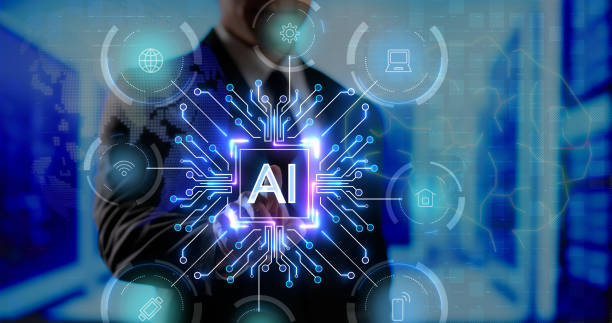
The history of AI robots is essentially a fusion of the history of robotics and artificial intelligence, both of which have evolved in parallel and then converged.
Early ideas about automated machines and artificial beings date back to antiquity, where legends and stories of moving statues or mechanical creatures were created.
In modern times, pioneers like Jacques de Vaucanson took the first steps in robotics with the creation of the mechanical duck in the 18th century.
However, the true concept of robots began in the 20th century with the emergence of industrial robots in the 1950s and 1960s.
Unimate, the first industrial robot, marked a turning point in factory automation.
Concurrently, in the 1950s, the concept of artificial intelligence was formalized with the Dartmouth Conference, where scientists like John McCarthy, Marvin Minsky, and Allen Newell seriously explored the possibility of building machines with cognitive capabilities.
In subsequent decades, advancements in programming languages like Lisp and Prolog, and the development of expert systems, strengthened the theoretical foundations of artificial intelligence.
However, until the late 20th century, robots were primarily machines that performed repetitive tasks based on precise programming and lacked the intelligence to adapt to dynamic environments.
In the early 21st century, with significant leaps in computational power, access to Big Data, and the development of machine learning algorithms (especially deep learning), the integration of artificial intelligence with robotics became possible.
This convergence led to the emergence of AI robots that can learn, perceive their environment, and perform more complex tasks through intelligent decision-making.
From service robots like surgical robots to autonomous vehicles and space exploration robots, these advancements represent a long path of evolution.
This evolutionary trajectory from simple machines to complex, self-learning systems indicates the boundless potential of intelligent robotics in the future.
Each new generation of AI robots not only builds upon the knowledge of its predecessors but also introduces novel capabilities that were previously only imaginable in science fiction.
Types of AI Robots and Their Applications in Various Industries
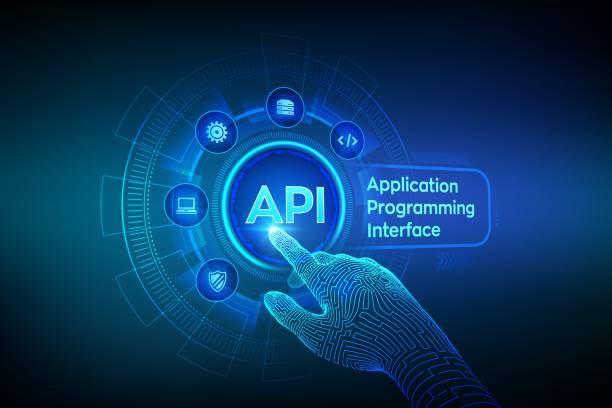
AI robots today exist in various shapes and sizes, each designed for specific applications.
This diversity covers a wide range of activities, from gigantic industrial robots on production lines to small and delicate surgical robots, and even smart home robots.
One of the main categories is industrial robots, primarily used in factories for repetitive, precise, and hazardous tasks such as welding, painting, assembly, and material handling.
These robots significantly increase production efficiency and reduce human error.
Another category is service robots, which directly interact with humans or assist in public environments.
This group includes domestic robots (such as smart vacuum cleaners), medical robots (surgical robots or nurse assistants), logistics robots (for warehousing and goods delivery), and educational robots.
Humanoid robots, which strive to resemble humans in appearance and behavior, are also employed in fields such as communication, hospitality, and even therapy.
Explorer robots, such as Mars rovers, play a vital role in investigating environments inaccessible or dangerous to humans.
Each of these AI robot types, by utilizing artificial intelligence capabilities such as machine vision, natural language processing, and machine learning, can perform their tasks more intelligently and with greater flexibility.
The application of each robot type depends on the specific needs of the industry and its operational environment.
| Robot Type | Key Features | Main Applications |
|---|---|---|
| Industrial Robot | High precision, high speed, high power, repeatability | Welding, assembly, painting, material handling, packaging |
| Service Robot | Human interaction, autonomous navigation, environmental perception | Home cleaning, warehousing, goods delivery, medicine, hospitality |
| Humanoid Robot | Imitation of human appearance and movements, expression of emotions | Research, entertainment, education, companion robot, reception |
| Medical/Surgical Robot | Unparalleled precision, remote control, assistance to surgeons | Complex surgeries, rehabilitation, nurse assistant, drug delivery |
| Explorer Robot/Drone | Navigation in complex environments, data collection, high durability | Inspection, mapping, agriculture, rescue, space exploration |
Technological Infrastructures of Artificial Intelligence in Robotics
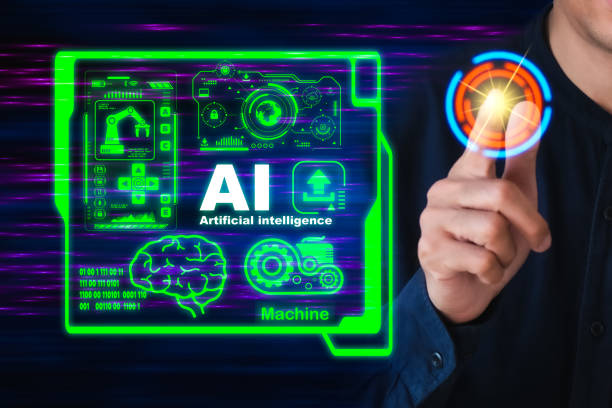
Behind every complex AI robot we see today, there is a set of advanced technological infrastructures that enable it to operate intelligently.
The core of these infrastructures is machine learning and specifically, deep learning.
Deep neural networks, with a structure inspired by the human brain, allow robots to recognize complex patterns in sensory data.
For example, computer vision, a subset of AI, gives robots the ability to “see” and interpret images and videos.
This capability is vital for autonomous navigation, object and person identification, and performing precise tasks.
Computer vision systems are crucial in industrial robots for quality control and in service robots for obstacle and person detection.
Natural Language Processing (NLP) is another important pillar that allows AI robots to interact with humans through spoken or written language.
This technology is widely used in service robots and voice assistants, facilitating communication between humans and robots.
Furthermore, navigation and mapping systems like SLAM (Simultaneous Localization and Mapping) help robots navigate unknown environments and build accurate maps.
This ability is essential for autonomous vehicles and warehousing robots.
High processing power, especially through the use of Graphics Processing Units (GPUs) and dedicated AI chips, is also a requirement for these robots to perform complex deep learning computations in real-time.
Diverse sensors (laser, radar, ultrasound, tactile) also provide rich and accurate data from the surrounding environment, which is vital for the robot’s intelligent decision-making.
Therefore, an advanced robotic system not only requires powerful hardware but must also be equipped with complex AI software and optimized algorithms to truly act “intelligently” and perform efficiently in dynamic and unstructured environments.
This interaction between hardware and software creates new possibilities for the development and improvement of AI robots’ performance.
Did you know that your company’s website is the first point of contact for 75% of potential customers?
Your website is the face of your brand. With **Rasawweb**’s corporate website design services, build an online presence that earns customer trust.
✅ Create a professional and lasting image for your brand
✅ Attract target customers and increase online credibility
⚡ Get free consultation from **Rasawweb** experts!
Ethical and Social Challenges of AI Robots

Despite the significant advancements in AI robots, their emergence and widespread adoption have raised important ethical and social questions that require serious attention.
One of the biggest concerns is the impact on the job market.
With increased automation and robots’ ability to perform more complex tasks, many routine jobs and even some specialized professions may be replaced by machines.
This could lead to increased unemployment and social inequality unless comprehensive programs for workforce retraining and the creation of new job opportunities are developed.
The issue of privacy and data security is also of high importance.
Smart robots, especially those operating in domestic or public environments, collect large amounts of personal information.
How is this data stored, processed, and protected? Is there a possibility of misuse of this information? These are questions that need to be carefully answered.
Also, the discussion of autonomous robot decision-making, especially in sensitive situations like self-driving cars or military robots, is challenging.
In the event of an accident, who bears legal responsibility? Can robots make decisions with ethical implications? These issues require strong legal and ethical frameworks.
Furthermore, the potential for bias and discrimination in AI algorithms is also a concern.
If the data on which machine intelligence is trained contains biases, robots will reflect and even amplify these biases.
This can lead to unfair decisions in areas such as employment, lending, or criminal justice.
Another debate occupying many minds is the nature of human-robot interaction and the potential for reduced social skills or even emotional dependence on robots.
To manage these challenges, cooperation among engineers, ethicists, policymakers, and society is essential for developing transparent laws and creating responsible AI.
A Look at the Future of AI Robots and Exciting Predictions
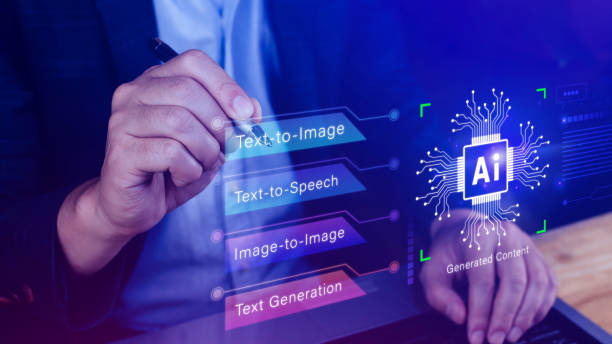
The future of AI robots is full of transformative potential and promises.
One of the main trends predicted is increased human-robot collaboration.
Instead of completely replacing humans, robots will primarily act as assistants and collaborators, performing dangerous, repetitive, or physically demanding tasks, allowing humans to focus on creative, strategic, and empathy-requiring work.
This coexistence, especially in work environments, will lead to increased productivity and the creation of new business models.
In the healthcare sector, smart robots are expected to play a more prominent role.
From highly precise surgical robots capable of performing more complex and minimally invasive procedures, to companion robots for the elderly that assist with daily tasks and even monitor their health, the future of medicine will be revolutionized by robots.
Furthermore, AI robots will demonstrate unparalleled capabilities in inaccessible environments such as space exploration or underwater.
The development of self-healing and self-organizing robots is another prediction.
Robots that can diagnose and repair their own defects, or autonomously coordinate with other robots to achieve common goals, will significantly increase the efficiency and sustainability of robotic systems.
In daily life, home robots are expected to become smarter and perform more complex tasks such as cooking or plant care.
Even robots with emotional intelligence could play the role of social companions in the future.
These advancements promise a world where AI robots are not only efficient tools but also dynamic and constructive members of human society, which, of course, requires laws and infrastructures commensurate with these developments.
The Learning and Evolution Process of AI Robots
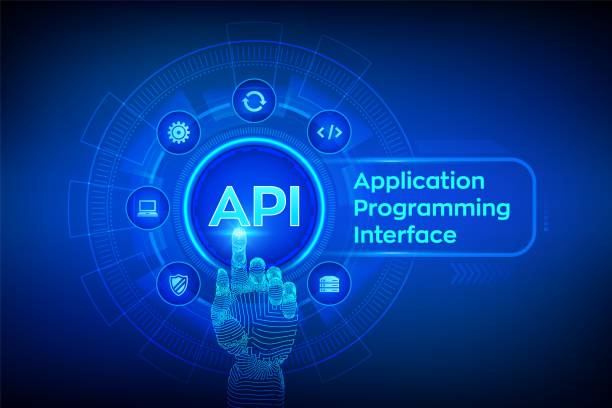
The ability to learn is the primary characteristic that distinguishes an AI robot from traditional machines.
These robots do not merely operate based on pre-set programming; instead, they are capable of learning from their data and experiences, improving their performance, and adapting to new conditions.
There are several learning methods for AI robots, each with its specific application.
One of the most common methods is Supervised Learning, where the robot is trained with a set of correct (labeled) input and output data.
For example, for object recognition, the robot is shown thousands of images of different objects along with their correct names.
The robot extracts patterns from this data and learns how to classify new objects.
Reinforcement Learning is another method where the AI robot learns through trial and error in its environment.
The robot performs actions and adjusts its behavior based on the rewards or penalties it receives, in order to achieve the best outcome.
This method is particularly effective for robots operating in complex and dynamic environments such as games or autonomous navigation.
Unsupervised Learning also allows the robot to discover hidden patterns and structures in unlabeled data, such as clustering similar data.
Deep Learning, a subset of machine learning that uses multi-layered neural networks, plays a vital role in empowering robots to understand complex data such as images, sound, and language.
These methods help machine intelligence constantly adapt to new experiences and achieve a level of performance that was previously unimaginable.
This evolutionary process enables robots to perform tasks with greater precision and efficiency and to succeed in new scenarios.
| Learning Method | Brief Description | Practical Example in Robotics |
|---|---|---|
| Supervised Learning | Training with labeled data (correct input-output) | Object recognition, face detection, audio classification |
| Unsupervised Learning | Discovery of patterns and structures in unlabeled data | Clustering sensory data, dimensionality reduction |
| Reinforcement Learning | Learning through trial and error by receiving rewards/penalties | Autonomous navigation, complex motion control, games |
| Deep Learning | Using multi-layered neural networks to process complex data | Advanced machine vision, natural language processing, 3D understanding |
| Imitation Learning | Learning behavior by observing and imitating a human or other agent | Learning robotic tasks from human demonstrations, autonomous driving |
Limitations and Obstacles to the Development of AI Robots

Despite significant advancements, the widespread development and deployment of AI robots still face considerable challenges and limitations.
One of the most important of these limitations is computational power and energy consumption.
AI algorithms, especially deep learning, require vast amounts of data and high processing power, which can be very costly and energy-intensive.
This issue is a serious obstacle, especially for autonomous robots that must operate in energy-constrained environments.
Another limitation is the absence of true general intelligence.
While AI robots perform exceptionally well in specific tasks they are designed for, they lack “common sense” or the ability to generalize their knowledge to completely new situations.
These robots may encounter difficulties in unpredictable environments or when faced with ambiguities.
For example, a medical robot might be highly accurate in diagnosing a specific disease but incapable of understanding the emotional nuances of a patient.
Also, issues related to the reliability and robustness of robots against errors in real-world environments present a major challenge.
Ensuring that an AI robot functions correctly under all circumstances, even when faced with noisy data or cyber attacks, is extremely difficult.
The ethical and social concerns previously raised also act as significant obstacles and necessitate the development of comprehensive legal and ethical frameworks.
Without public acceptance and trust, the widespread deployment of machine intelligence will face limitations.
These challenges require continuous research and development in hardware, software, and policy-making to realize the full potential of AI robots.
Are you tired of losing business opportunities due to not having a professional corporate website?
Rasawweb helps you by designing a professional corporate website:
✅ Build a powerful and reliable image for your brand
✅ Convert website visitors into loyal customers
⚡ Get free consultation now!
Everyday and Entertaining Applications of Smart Robots
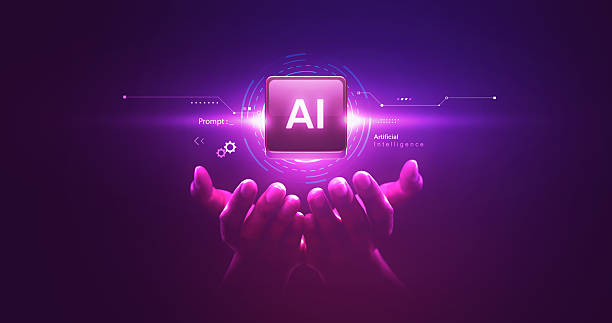
AI robots are not limited to large and complex industries; rather, they are increasingly entering our daily lives, bringing with them entertaining and practical aspects.
One of the most common examples is robotic vacuum cleaners that autonomously clean homes.
These devices, using sensors and navigation algorithms, find optimal paths to cover the entire living space and automatically return to their charging station upon completion of the task.
This is an excellent example of how AI robots can increase convenience and save time.
In the entertainment sphere, smart pet robots like Sony’s Aibo act as robotic companions that can play with their owners, perform specific movements, and even respond to voice commands.
These robots are particularly appealing to individuals who cannot keep real pets.
Additionally, educational robots for children, such as those that teach programming or basic STEM skills, are on the rise.
These robots make learning more engaging for children through interactive and game-like methods.
Smart voice assistants like Amazon Alexa or Google Home are also a type of machine intelligence that, in the form of home devices, assist users with tasks such as playing music, setting reminders, controlling smart home devices, and even answering questions.
These AI robots, with their natural language processing capabilities, have made human-technology interaction much smoother.
From food delivery robots in universities and cities to porter robots in shopping centers, the applications of intelligent robotics are constantly expanding and improving the quality of life in various aspects.
These robots not only simplify tasks but can also bring new dimensions of entertainment and interaction into our lives.
Preparing for Life in the Age of AI Robots
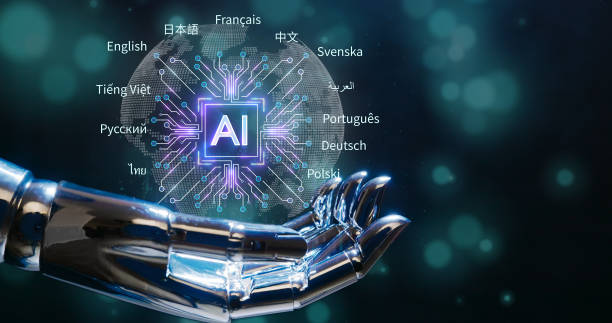
Given the rapid advancements in the field of AI robots, preparing for life in an era where this technology plays a central role is essential.
This preparation not only involves understanding new technologies but also requires changes in educational, social, and economic approaches.
One of the most important steps is investing in education and training.
Educational systems must focus on developing skills where robots are weak, such as creativity, critical thinking, emotional intelligence, empathy, and complex problem-solving skills.
Reskilling and upskilling the workforce are also of high importance.
Individuals whose jobs are at risk of automation should have opportunities to learn new skills in areas such as programming, data analysis, robotics engineering, or even roles related to managing and overseeing AI systems.
Governments and companies must invest in this area to facilitate the transition of the workforce towards new jobs.
Furthermore, a change in societal attitude towards robots and artificial intelligence is necessary.
Public education should be provided to reduce fear and increase a correct understanding of the capabilities and limitations of machine intelligence.
Encouraging human-robot collaboration in work and social environments, instead of a competitive view, can help optimize the utilization of this technology.
At the policy level, formulating transparent laws and regulations for AI ethics, data privacy, and robot accountability is crucial.
These laws must be designed to encourage innovation while protecting human rights and security.
Ultimately, it should be remembered that the AI robot is a tool that can be used to improve the quality of life, solve major global challenges, and create new opportunities.
Preparing for this future requires a comprehensive approach and cooperation among all stakeholders to ensure that technology serves humanity.
Frequently Asked Questions
| Question | Answer |
|---|---|
| What is an AI robot? | An AI Robot is a machine capable of perceiving its environment, reasoning, learning, and making decisions to perform tasks autonomously. |
| What is the difference between regular robots and AI robots? | Regular robots perform repetitive tasks based on prior programming, whereas AI robots can learn from experience, interact dynamically with their environment, and even behave in a manner resembling human intelligence. |
| What are the main applications of AI robots? | They are used in industries (manufacturing, assembly), medicine (surgery, diagnosis), services (customer support, domestic), exploration (space, underwater), and many other fields. |
| What technologies are used in building AI robots? | Machine Learning, Computer Vision, Natural Language Processing, Deep Learning, and Robotics are among the key technologies. |
| Can AI robots have emotions? | Currently, robots do not have emotions in the human sense. They can identify and react to emotions, but they do not experience them themselves. |
| What are the main challenges in developing AI robots? | Safety, reliability, ethics, autonomy, adaptation to complex environments, and natural human interaction are among the important challenges. |
| How are AI robots trained? | They are typically trained using large volumes of data, machine learning algorithms, and deep learning to identify patterns and make decisions. |
| Examples of AI robots in daily life? | Smart robotic vacuum cleaners, customer support chatbots, self-driving cars, and surgical robots in hospitals. |
| Are AI robots a threat to human jobs? | Some repetitive jobs may be automated, but at the same time, robots can increase productivity and create new jobs in the development, maintenance, and oversight of these systems. |
| How is the future of AI robots predicted? | They are expected to become smarter, more autonomous, and capable of performing more complex tasks, and to interact more closely with humans in various environments. |
And other services from Rasawweb Advertising Agency in the field of advertising
Smart Sales Automation: A dedicated service for digital branding growth based on precise audience targeting.
Smart Data Analysis: Designed for businesses looking to increase click-through rates through custom programming.
Smart Website Development: A dedicated service for online growth based on custom programming.
Smart Brand Identity: Designed for businesses seeking to improve SEO ranking through the use of real data.
Smart Customer Journey Map: A fast and efficient solution for increasing website traffic with a focus on marketing automation.
And over a hundred other services in the field of internet advertising, advertising consultation, and organizational solutions
Internet Advertising | Advertising Strategy | Advertorial
Sources
Digikala Magazine: AI and Robotics
Zoomit: AI Category
ITNA: Applications of AI in Industry and Daily Life
Tasnim News: What is AI? Its Application and Role in the Future of Humanity
? To boost your business in the digital space, Rasawweb Afarin Digital Marketing Agency paves your path to success with services such as custom website design, Search Engine Optimization (SEO), and professional social media management.
📍 Tehran, Mirdamad Street, next to Bank Markazi, Kazerun Jonoubi Alley, Ramin Alley, No. 6




